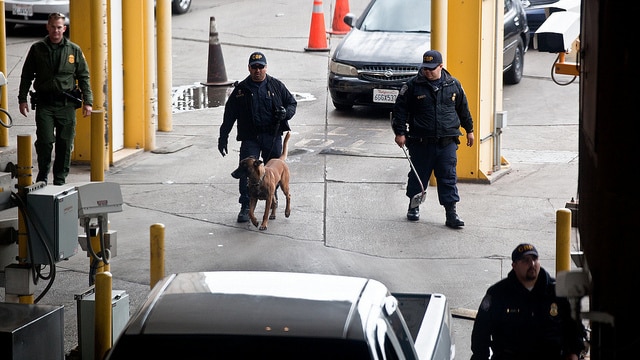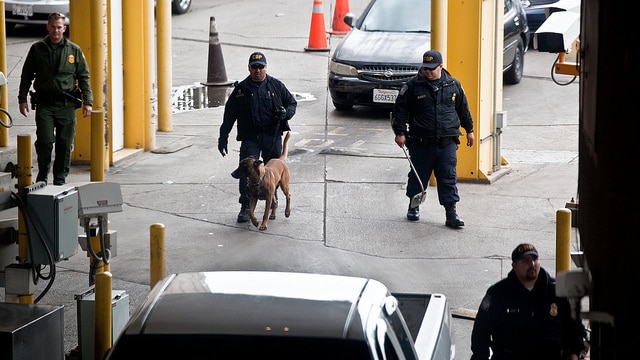
Ashley Cervantes, a then 18-year-old American citizen, was stopped at the Mexico border and, for some unspecified reason, perhaps related to her being young and of Hispanic ethnicity, accused by Customs and Border Protection (CBP) of smuggling drugs.
What Drugs?
A search of her person and belongings proved fruitless, which often is a strong indicator that there are no drugs. The process involved being locked into a detention room for several hours, handcuffed to a chair, while several dogs were brought in to sniff at her. A request to call her mother was denied.
But bullying is the best law enforcement tactic, so they gave her a body cavity search, which means a CBP agent put on some rubber gloves and shoved a finger up her vagina and butt. She was also made to squat pantless so female investigators could visually inspect her privates. Still no drugs.
So Customs and Border Protection took her to a local hospital against her will, in handcuffs. No warrant, no consent. Instead, a Customs and Border Protection agent signed a “Treatment Authorization Request” as she was considered an alleged “potential internal carrier of foreign substance.” That form requested an X-ray.
After the X-ray showed no drugs, doctors performed another vaginal and anal search. No drugs. She was finally released after seven hours of humiliation and given a bill for $575 for “medical treatment.”
What Rights?
Cervantes now has a civil rights lawsuit pending against the government. “[I] had never before been to a gynecologist and, for the remainder of my life, will always remember that my first pelvic and rectal exams were done under the most inhumane circumstances imaginable to a US citizen at a hospital on US soil,” she charges.
What Border?
Begin at America’s borders. Most people believe they are in the United States as soon as they step off an international flight, or as long as they are waiting for their outbound flight, or as they enter a CBP office on the border, as with Cervantes in the case above, and are thus fully covered by the Bill of Rights.
Wrong. And the irony that a person can be separated from his Constitutional rights by a border marked by a pane of glass is not to be missed.
The truth has, in the twenty-first century, become infinitely more complicated as long-standing practices are manipulated to serve the expanding desires of the national security state.
Over the years, recognizing that certain situations could render Fourth Amendment requirements impractical or against the public interest, the Supreme Court crafted various exceptions to them. One was the “border search.” The idea was that the United States should be able to protect itself by stopping and examining people entering or leaving the country. As a result, routine border searches without warrants are constitutionally “reasonable” simply by virtue of where they take place. It’s a concept with a long history, enumerated by the First Congress in 1789.
What Border, 2016 Edition?
Here’s the twist in the present era: The definition of “border” has been changed. Upon arriving in the United States from abroad, you are not legally present in the country until allowed to enter by Department of Homeland Security (DHS) officials. You know, the guys who look into your luggage and stamp your passport. Until that moment, you exist in a legal void where the protections of the Bill of Rights and the laws of the United States do not apply. This concept also predates Post-Constitutional America and the DHS. Remember the sorting process at Ellis Island in the late nineteenth and early twentieth centuries? No lawyers allowed there.
What once were modest exceptions in Constitutional America morphed into a vast “Constitution-free zone.” The “border” is now a strip of land circling the country and extending 100 miles inland that includes two-thirds of the US population. In this vast region, Customs and Border Protection (CBP) can and conduct warrantless searches.
Reprinted with permission from WeMeantWell.com.

